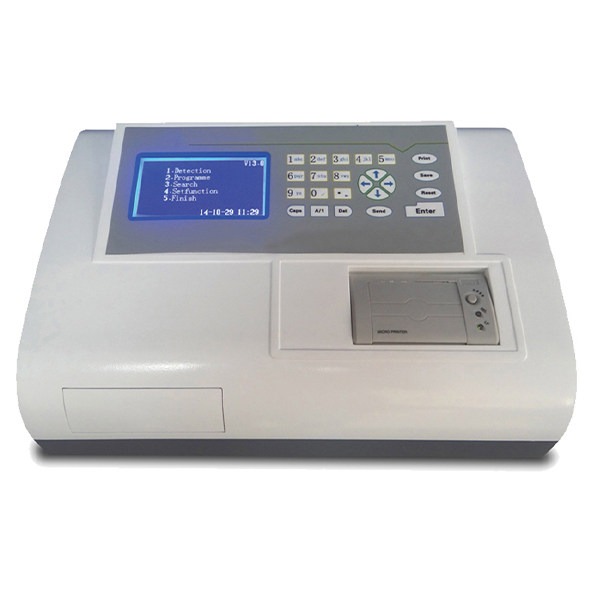A microplate reader is a vital tool in various fields, including clinical research, biology, agriculture, and food safety monitoring. To ensure the accurate and efficient functioning of this equipment, proper maintenance and usage precautions are essential. This article provides 10 valuable tips for maintaining your microplate reader and outlines precautions to optimize its performance and lifespan.

10 Tips for Maintaining the Microplate Reader:
Stable Environment:
Place the microplate reader in an environment with no magnetic field or interference voltage, lower than 40 decibels, to ensure a stable table without strong vibrations.
Avoid Sunlight Exposure:
Prevent direct sunlight exposure to avoid premature aging of the microplate reader.
Optimal Operating Conditions:
Maintain an ambient temperature between 15°C and 40°C and humidity between 15% and 85% during operation.
Stable Voltage:
Ensure a stable operating voltage to prevent fluctuations during use.
Clean Operating Environment:
Operate in a clean environment, free from water vapor and smoke.
Clean and Level Workspace:
Keep a dry, clean, and level work surface with sufficient operating space.
Regular Cleaning:
Keep the surface and interior of the microplate reader clean. Clean up any spilled samples or reagents promptly.
Avoid Power Interruption:
Do not turn off the power during the detection process.
Timely Shutdown:
Turn off the microplate reader after use and cover it with the dust cover.
Technical Support:
In case of technical failure, contact the microplate reader manufacturer for assistance. Do not disassemble the equipment without authorization.

10 Precautions for Using the Microplate Reader:
No Mixing of Dosing Heads:
If using a dosing device, ensure dosing heads are not mixed.
Thorough Plate Washing:
Wash the microplate thoroughly, preferably with a plate washer, to prevent cross-contamination.
Follow Kit Instructions:
Operate according to kit instructions, ensuring accurate reaction times.
Avoid Contact during Self-Inspection:
During self-inspection, do not touch the loading platform or microplate to prevent accidents.
Prevent Contamination:
Avoid spills on the microplate reader, and wash hands after operations.
Handling Hazardous Materials:
Follow kit instructions for handling polluting, toxic, or biologically hazardous samples to protect operators.
Clean and Disinfect if Contacted:
If the microplate reader contacts polluted or infectious items, clean and disinfect it.
Avoid Power Interruption:
Do not turn off the power during the detection process.
Modify Parameters if Necessary:
Adjust parameters promptly in case of measurement result deviations due to kit issues.
Technical Support:
In case of technical failure, contact the microplate reader manufacturer for assistance. Do not disassemble the equipment without authorization.
Conclusion:
Proper maintenance and adherence to usage precautions are essential for maximizing the performance, accuracy, and longevity of your microplate reader. Following these 10 maintenance tips and precautions will contribute to a reliable and efficient operation, ensuring that your microplate reader continues to be a valuable asset in your laboratory or research facility. If challenges persist, seeking assistance from the manufacturer is recommended for timely and effective resolution.










Comments (0)